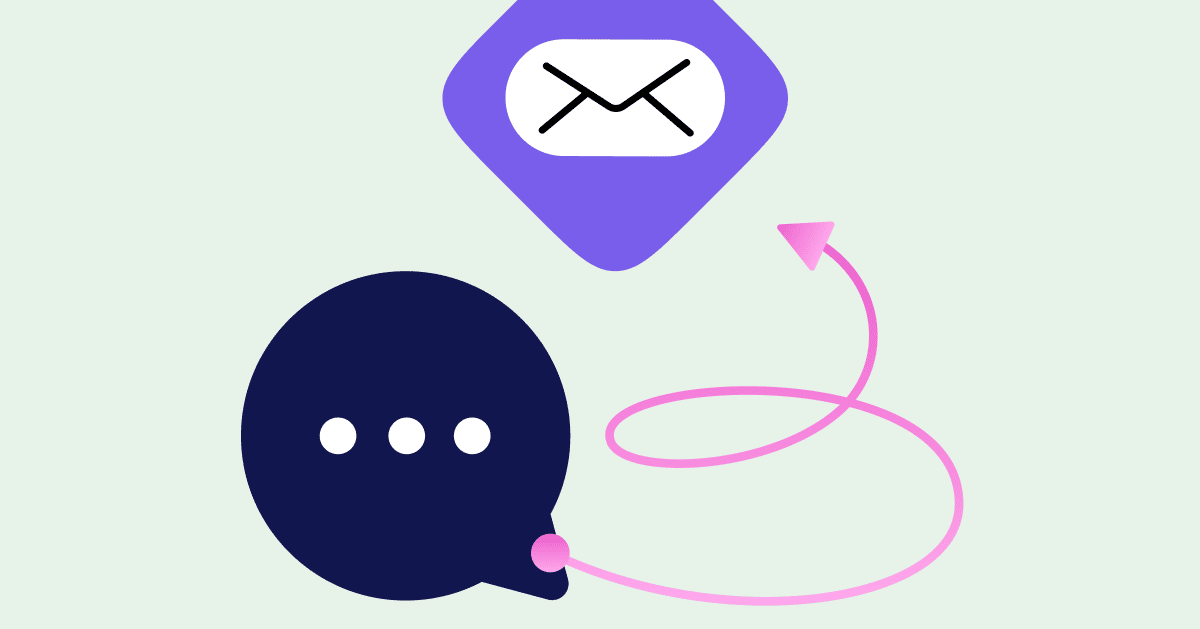SMS vs. Email Marketing: Which Channel Wins in 2021?

Written by Taran Soodan
January 29, 2021
Email marketing has been one of the most reliable and steadily-performing marketing channels for decades. But with the rise of mobile phones, SMS marketing is rapidly gaining in popularity.
But with customers’ attention being split amongst so many brands now, it’s hard to know which channel is best for communication and generating a return on investment (ROI) for your marketing campaigns. To achieve maximum ROI, it’s important to identify the right strategy for your marketing campaign. Sometimes, SMS wins. Other times, email wins. Sometimes a powerful duo of both SMS and email marketing can achieve the desired results.
What to compare with SMS and email Marketing
With ever-changing customer preferences and new marketing tools, it can sometimes be confusing to choose between SMS marketing and email marketing. Here are some factors to consider when choosing right strategy for your marketing campaign
1. Open rate
SMS marketing has a striking edge over email marketing in terms of open rate. The average open rate for an SMS campaign is as high as 98% while email rings in at just 20%. By extension, response rates for text messages are much higher than emails as well.
Text messaging is a more direct route to customers because recipients are notified instantly, and usually have a better chance at bing seen. Text messages are generally opened within 90 seconds of delivery, while email open rates hover around 90 minutes.
2. Deliverability
Around 269 billion emails are sent every day with roughly 50% of them ending up in spam folders. (Fun fact: A typical office worker receives around 120 emails per day.)
Whereas around 22 billion texts are sent every day with an average millennial receiving roughly 67 messages a day. Users get text notifications right away on their phones as compared to the email notification. While text marketing seems like the automatic choice, like email, it does require users to opt in to receive SMS communications from your brand. Once subscribers have opted in though marketers can incentivize customers with small rewards, hopefully increasing the brand’s mobile number database.
3. Click-through rate
SMS messages are shorter to read and the click-through rate is around 19% because of its short length. Only 3.2% of people click the links in a marketing email mainly because it’s long and they get bored halfway before actually reaching the link.
4. Cost
The cost of a text marketing campaign varies by length, the number of texts being sent, and region. It also depends on the service provider and carrier. Comparatively, email marketing campaigns are typically less expensive; however, email customization varies from business to business and can vary in cost depending on the type of campaign.
5. Customization
Email campaigns are way more customizable than SMS messages where you’re limited to only 160 characters only. If you choose to go with an SMS campaign, make sure your message is short, precise, and has absolutely no fluff. If you’re looking to provide my details, consider using email as it allows you to send hyperlinks, attachments, images, videos, forms, etc. It also highlights your brand tone and voice clearly through colors, design, and logo.
Common questions about SMS marketing vs. email marketing
As mentioned earlier both email and SMS marketing methods have their advantages and disadvantages, but a combination of the two can result in a powerful marketing strategy. Here, we’ve flushed out a few common questions about using both types of marketing strategies.
Is SMS marketing effective?
As soon as an SMS is received it grabs the user’s attention. The average response time for SMS is just under 90 seconds and around 75% of people said they like to receive promotions via text. Plus, over 65% of marketers say that SMS marketing is very effective for them. Additionally, 82% of people say they open every message they receive.
Why would you choose email marketing over bulk text marketing?
We don’t recommend completely ditching one medium over another. But for some marketing campaigns where brand recognition, customer engagement, and interaction are required, email marketing is the way to go. For shorter, personalized messages, SMS marketing works well, but is not meant for every marketing campaign.
Is email marketing still effective in 2021?
Although there is a growing trend of social media and influencer marketing, email marketing continues to be the most cost-effective choice for marketing your business online. Your email marketing strategy should be optimized for the latest innovation and trends to remain effective in 2021. Email is expected to reach 4.2 billion users in the next three years, and in 2019, roughly 62% of all emails were read on a mobile device; therefore optimizing your email campaigns for mobile is a must in 2021.
When should I use SMS marketing?
SMS marketing is very effective if you want immediate connection with your customers. It’s important to keep messages short and creative, and works best for time-based offers, special promotions, alerts, and reminders. For example, clinics can use text messages for appointment reminders and restaurants can use them for limited-time coupons.
Why brands use email marketing
With the rise of modern technologies and analytical tools — which help you make more informed marketing decisions — email marketing is more powerful than ever before. Email has the largest reach compared to all other platforms and is still the preferred communication channel amongst professionals. Here are some pros and cons to email marketing.
Advantages of email marketing
The benefits of email marketing are unmatched by any other type of marketing. Marketers have more control over campaigns, through targeted direct mail, based on user interests and demographics, allowing brands to personalize marketing messages that lead to higher engagement.
1. Customers expect emails
Email adds a sense of authenticity to your brand and builds a better connection to your customers, especially since roughly 61% of consumers trust email as their preferred method of communication with online brands, increasing your brand recognition and, again, leading to higher conversion rates.
2. High ROI
In terms of ROI, email still leads the way across all marketing channels. According to Direct Marketing Association, email marketing generates $40 for every $1 spent in ROI, and is 40x more effective in new customer acquisition than Facebook.
3. Endless automation potential
The potential for email marketing automation is huge, and saves you a lot of time, effort, and money. And when combined with analytics, automation provides better conversions and click rates.
Disadvantages of email marketing
While email marketing is still effective, there are some limitations to the channel. Here’s what to keep in mind with email marketing.
1. Lower click-through and open rates
Low click-through and open rates are probably the most concerning issue with regards to email marketing. With inboxes flooded daily, it can be hard to ensure your messages are seen.
2. Can be spammy
Customers hate spam, especially if emails are sent from larger, impersonal lists. That’s why email personalization is important to avoid ending up in spam folders and any damage to your brand reputation.
3. Filters block emails
Most email service providers have strict filters to segment inboxes. Gmail, for example, labels some email as “important,” automatically decreasing advertising email visibility.
Advantages of SMS marketing
With the increased use of mobile devices, SMS marketing is a massive opportunity to capture customer attention, but can only be sent after receiving explicit permission. Shortcodes are typically used instead of a regular phone number, and most smartphones support MMS which makes SMS marketing more engaging.
1. Read within three minutes
SMS’s greatest advantage over email is that it’s read within three minutes of receipt, giving it a 209% higher response rate than phone callls, email, or Facebook.
2. No internet required
You don’t need Internet access or a smartphone to send or receive an SMS and means your campaigns reach a wider audience.
3. High engagement levels
Engagement levels are much higher than email as it takes only 90 seconds to respond to an SMS; users are more likely to click on a CTA in a text because it’s short and precise.
Disadvantages of SMS marketing
A few major disadvantages of SMS marketing is its text and media limitations. It can also annoy your potential customer if campaign timing and frequency are off.
1. Character limitations
A single text message is limited to just 160 characters, so marketers need to be extra creative to deliver clear and poignant messages.
2. Cost
SMS campaigns cost per text sent and are at the mercy of regional charges and carriers.
3. Lack of trust
Sending an unlimited stream of or poorly-structured SMS messages can result in a lack of customer trust, causing potential users to opt-out of subscriptions. Sending text messages at the wrong time (like in the middle of the night when people are sleeping) can also annoy potential customers.
Email marketing vs. SMS marketing: Who wins?
Well, neither. While there is no clear winner between SMS and email marketing, both SMS and email perfectly complement each other and provide the best results when used as part of an omnichannel marketing strategy.
When to use email marketing
Relevancy and personalization is the key to an effective campaign. If your email is not relevant to a particular customer it may end up in the trash or remain unseen due to strict spam filters.
Promoting multiple products
Emails are customizable and interactive. You can highlight multiple products with different templates in a single, dynamic email, increasing the click-through rates and resulting in more sales.
Company updates
Informing your customers about your company increases brand loyalty. Email is the best way to let your customers know what’s going on.
Newsletters
Whether you’re sharing your brand’s story to build trust, explaining product development or promoting a loyalty program, regular newsletters help build brand authenticity.
Order & delivery updates
Email is a professional and trustworthy medium when it comes to transactions. Because email is secure and trackable, it should be used for orders, payment confirmation, and delivery updates.
When to use SMS marketing
SMS marketing works best for time-sensitive messages and is the most mobile-friendly way to interact with customers. Set up keywords for SMS campaigns and use shortcodes for branding purposes.
Promote a single product
Promoting a product through SMS marketing can positively influence buyers’ purchase decisions. By only promoting one product instead of multiple, you can keep customers attention and not have to worry about them switching to view other products.
Answer customer questions
SMS is the quickest way to engage customers in conversation to answer any queries or solve any issues, and is a powerful way to take your customer service offerings to the next level.
Ask for reviews
Sending a more personalized text message can help you get a review on your website.
Get sign-ups for your referral and loyalty programs
SMS marketing is an effective tool to ensure customer loyalty and commitment. Use SMS to increase your email subscribers and incentivize customers with discount coupons to join your loyalty program.
Combine SMS and email marketing to get the best performance
By implementing a mobile-first strategy for both channels, coupled with the right timing and frequency, can help businesses achieve their marketing campaign goals. Leverage the power of an omnichannel strategy to achieve robust business growth and build better customer relationships.
Conclusion
Consumer habits are continuously evolving. Both the marketing channels are effective and work even better when used simultaneously. SMS marketing helps build an email list while email subscriptions provide valuable insights for sending personalized messages to SMS recipients.
Regardless of which marketing channel you choose, user permission is vital for collecting emails or phone numbers. Plus, when you have customer consent, you are actually building trust and avoiding being sent to spam.
To get started with omnichannel marketing, try out ManyChat for free!









